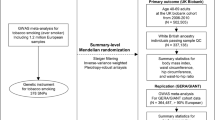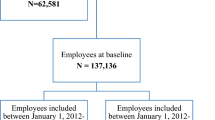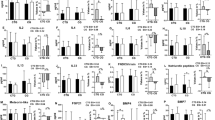Abstract
BACKGROUND: The known postmenopausal increase in cardiovascular risk may relate in part to changes in fat distribution. Environmental factors which are known to influence cardiovascular disease risk may do so in part by influencing body fat and its distribution.
OBJECTIVES: To determine the relationships between tobacco smoking, oestrogen replacement (ERT) and body fat and its distribution in postmenopausal women, independent of genetic factors, physical activity, diet composition and socioeconomic factors.
DESIGN: Cross-sectional study in normal post menopausal twins.
SUBJECTS: 712 postmenopausal female twins (aged 58.7±0.2 y, body mass index (BMI) 24.4±0.1 kg/m2).
MEASUREMENTS: Anthropometry; body composition and fat distribution by dual energy x-ray absorptiometry; physical activity, muscle strength, socioeconomic status, dietary composition and dehydroepiandrosterone sulfate (DHEAS).
RESULTS: In monozygotic pairs discordant for smoking, intrapair differences in total and central fat were greater than that in concordant pairs, with the lower fat mass in the smoking twin. Overall, smokers had a lower weight, BMI, total and central abdominal fat, despite a higher total and saturated dietary fat intake and similar DHEAS levels. The reduction in central fat was not independent of that in total fat.
In monozygotic twins discordant for ERT-use the intrapair differences in total and central body fat were significantly greater than in concordant pairs, with the lower fat measure in the ERT-using twin. Overall, current ERT-users had similar body weight, BMI and total fat compared to non-users but had lower central fat. There were no differences in activity levels, diet or socioeconomic factors between ERT-users and non-users.
CONCLUSIONS: Smoking and ERT-use are associated with lower total and central fat in monozygotic postmenopausal twins. In current smokers, the lower central adiposity appears related to its influence on total body fat. In ERT-users, lower central fat may contribute to the reduced cardiovascular risk associated with postmenopausal oestrogen use.
This is a preview of subscription content, access via your institution
Access options
Subscribe to this journal
Receive 12 print issues and online access
$259.00 per year
only $21.58 per issue
Buy this article
- Purchase on SpringerLink
- Instant access to full article PDF
Prices may be subject to local taxes which are calculated during checkout
Similar content being viewed by others
Author information
Authors and Affiliations
Rights and permissions
About this article
Cite this article
Samarás, K., Kelly, P., Spector, T. et al. Tobacco smoking and oestrogen replacement are associated with lower total and central fat in monozygotic twins. Int J Obes 22, 149–156 (1998). https://doi.org/10.1038/sj.ijo.0800558
Received:
Revised:
Accepted:
Published:
Issue date:
DOI: https://doi.org/10.1038/sj.ijo.0800558
This article is cited by
-
Heritability of Body Fat Using DXA
Obesity Research (2005)
-
Relationships between cigarette smoking, body size and body shape
International Journal of Obesity (2005)
-
Obesity and Sarcopenia after Menopause Are Reversed by Sex Hormone Replacement Therapy
Obesity Research (2001)
-
Relationships of age, menopause and central obesity on cardiovascular disease risk factors in Chinese women
International Journal of Obesity (2000)



